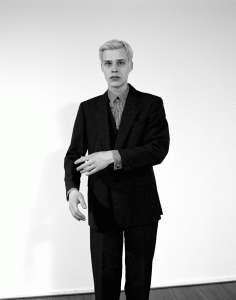« Reviews
QUICKSCAN NL#01 - Photography Now
Nederlands Fotomuseum - Rotterdam
Curated by Frits Gierstberg
By Catherine Somzé
Along with design and architecture, photography constitutes one of the most challenging and vigorous artistic fields in the Netherlands. “QUICKSCAN NL#01″ is the first edition in a series of survey exhibitions to be held every four years at the Nederlands Fotomuseum in Rotterdam. With approximately 150 works on display, including video installations and artists’ books by nineteen artists, one collective and three photographer duos, it aims at mapping and tracking the newest development in the field of Dutch photography, fostered by digital technologies, the widespread use of graphics-editing software and the proliferation of images due to the World Wide Web. Yet, is it possible to account for the multiplicity of photographic practices that have recently emerged within the framework of one single exhibition? “The result is unavoidably partial,” says curator Frits Gierstberg, head of exhibitions at the Nederlands Fotomuseum.
Most of the new Dutch photography hopefuls were born in the late 1970s and early ‘80s. They recently graduated from art schools that have made a name in the Netherlands for treating photography as a conceptual tool rather than as a commercial medium: the Rietveld Academy in Amsterdam and the AKV|St. Joost in Breda, most significantly. They blur traditional genres, interrogate the medium of photography and work in series rather than with single frames. Anouk Kruithof, for instance, builds installations and asks her models to react to them. As do many of her large-scale portraits: Driven Man (2008) exudes a powerful sense of mystery as a young man carries out gestures, the sense of which one cannot fully grasp. And Wassink and Lundgren challenge the idea of the decisive instant by always presenting a situation from two perspectives simultaneously.
Yet “QUICKSCAN NL#01″ does not only feature the work of talented youngsters, it also showcases works of older players, who make “relevant work today,” says Gierstberg. Luuk Wilmering, born in 1957, presents large-scale, over-painted photo collages printed on canvas from his series Visiting Versailles et Les Trianons (2008-2009). Martine Stig premieres her second video work, Play (2009), a compelling patchwork of documentary images shot on the streets of New York, aimed at deconstructing the rules of narrative cinema. Every shot is eye candy.
While many other artists working with photography today would have fit the criteria selection of self-reflexivity and social relevance roughly stated by Gierstberg, there was a conscious choice made to avoid featuring the work of photographers who have already been lauded for their work in the Netherlands. A significant absence is that of 2007 Prix de Rome winner Viviane Sassen with her work shot in Africa, which challenges stereotypical depictions of the continent and the colonial history of photography. Despite these omissions, “QUICKSCAN NL#01″ remains a great fair to discover new and older talents.
(January 16 - May 24, 2010)
Catherine Somzé teaches media theory and modern and contemporary art history at the Willem de Kooning Academy in Rotterdam. She is the chief art critic for Time Out Amsterdam.
Filed Under: Reviews



































